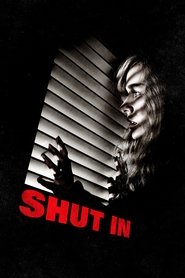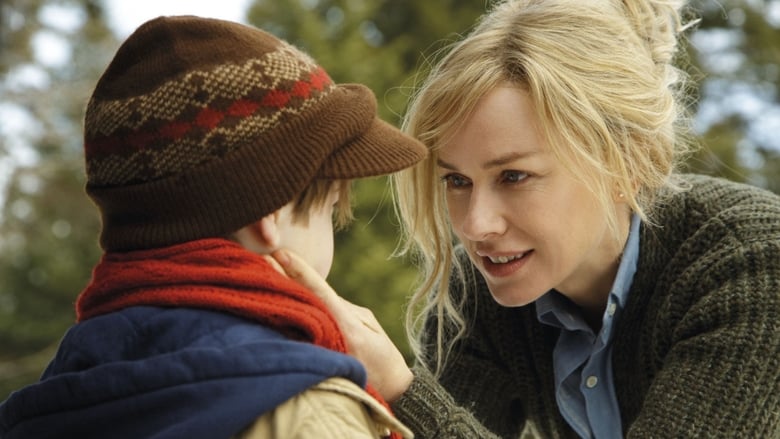“Shut In” (2016) is a psychological thriller that follows the character of Mary, a widowed child psychologist living in an isolated New England house.
When a snowstorm hits, trapping her and her stepson, Stephen, inside, strange occurrences and nightmarish visions begin to plague Mary.
As the storm intensifies and Stephen disappears, Mary must confront her inner demons and untangle reality from her own mind before it’s too late.
The tension builds steadily like a snowball rolling downhill, ultimately leading to a shocking twist that will leave viewers chilled to the bone.

CLICK HERE🠇🠇🠇🎦_Watch Shut In 2016 English Subtitles_
Review
Shut In: Facing Fear and Loneliness in the Dark
Who among us has not felt shut in at some point in our lives? Trapped by circumstances, doubts, or fears, we may long for escape, connection, or meaning. The movie Shut In explores these themes with a haunting intensity that lingers long after the screen fades to black.
Directed by Farren Blackburn and written by Christina Hodson, Shut In stars Naomi Watts as Mary Portman, a widowed child psychologist who lives in a remote house in Maine with her comatose son Stephen (Charlie Heaton). Mary struggles to cope with her grief, guilt, and isolation while taking care of Stephen’s medical needs and dealing with her own nightmares and visions. Her only contact with the outside world comes from her sessions with her young patient Tom (Jacob Tremblay), who has an abusive father (David Cubitt) and seeks refuge in Mary’s empathy and guidance. However, when a blizzard hits the area and Mary loses power and phone signal, she discovers that someone has broken into her home while she was sleeping. A cat-and-mouse game of survival ensues as Mary tries to protect herself and Stephen from the unknown intruder while confronting her own past and present demons.
At first glance, Shut In may seem like another generic thriller that relies on jump scares, cliches, or gratuitous violence to entertain or shock its audience. However, what makes Shut In stand out from the crowd is its commitment to character development, atmosphere-building, and psychological tension. Rather than rely on external stimuli to generate fear or suspense, Blackburn and Hodson use silence, darkness, close-ups of faces and objects, dreamlike imagery, sound effects (or lack thereof), and subtle shifts of perspective to immerse us into Mary’s fragile state of mind. Each shot feels deliberate yet organic, each scene feels consequential yet restrained. As we follow Mary’s journey through the maze of her own psyche and past traumas, we become invested in her fate and that of those around her. Watts delivers a nuanced performance that captures Mary’s strength, vulnerability, intelligence, and fragility with empathy and authenticity. Heaton also shines in his role as a voiceless presence that haunts Mary and creates a palpable sense of dread.
However, Shut In is not flawless. Some viewers may find the plot too predictable, formulaic, or implausible, especially in its final act. Some may also criticize the film for using mental illness as a plot device or stereotype to explain certain behaviors or twists. Moreover, some may argue that Shut In perpetuates harmful tropes by portraying women as victims who need to be rescued or avenged by men. While these criticisms have merit and deserve attention and analysis, they do not necessarily undermine the overall quality of Shut In as a compelling and well-crafted thriller that explores universal themes such as trauma, loss, resilience, empathy, and hope.
Shut In also benefits from the contributions of its supporting cast and crew. Tremblay delivers another impressive performance after his breakout role in Room (2015), managing to convey Tom’s innocence and pain without falling into melodrama or sentimentality. Cubitt brings nuance to his abusive father character by showing glimpses of regret and self-awareness amidst his rage and control issues. Oliver Platt plays Mary’s colleague Dr. Wilson with wit and warmth while bringing some much-needed comic relief to the film’s heavier moments. The score by Nathaniel Méchaly blends ambient sounds with haunting melodies that increase the film’s tension without overpowering it. The cinematography by Yves Bélanger captures the beauty of Maine’s landscape while highlighting its eerie quietness and isolation.
Shut In had a mixed critical reception upon its release in 2016 but managed to earn over $11 million against its $10 million budget. While it did not receive any major awards or nominations, it remains a potent example of how genre films can blend style and substance to produce memorable and meaningful experiences for their audiences. Shut In also showcases the talents of its filmmakers, who demonstrate a keen sense of pacing, mood, and characterization that elevate the film above its peers. Whether you are a fan of thrillers or dramas, horror or suspense, Shut In offers something for everyone who is willing to face their fears and embrace their humanity in the dark. As Brené Brown says, “Vulnerability is the birthplace of innovation, creativity, and change.” Shut In proves that vulnerability can also be the path to compelling storytelling that resonates with our deepest longings and fears.
Technical Data

- Runtime : 91
- Release : 2016-11-11
- Genre : Drama, Thriller
- Cast : Naomi Watts as Mary Portman, Oliver Platt as Dr. Wilson, David Cubitt as Doug Hart, Jacob Tremblay as Tom Patterson, Charlie Heaton as Stephen Portman
- Crew : Louis Craig as Special Effects Supervisor, Lisa Ellzey as Executive Producer, Maryline Monthieux as Editor, Ariel Zeitoun as Executive Producer, Jeremy Stanbridge as Art Direction
- Popularity 11.539
- Budget : $10,000,000
- Revenue : $13,082,071
- Company : EuropaCorp, Lava Bear Films, Transfilm International
- Summary : A widowed child psychologist lives in an isolated existence in rural New England. When caught in a deadly winter storm, she must find a way to rescue a young boy before he disappears forever.
- Tagline : Some fears can’t be shut out.
